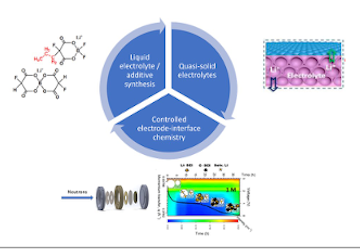Project Details

The overarching goal of this project is to develop fundamental understanding that will enable tailoring of the chemical structure, functionality, configurational order, and architecture of electrodes and electrolytes for stable electrode/electrolyte interfaces and high ionic conduction, which will together advance next-generation energy storage. To achieve this goal, the project will address three specific aims: (1) Design task-specific salts to form stable, ionically conducting solid electrolyte interphase (SEI) layers; (2) Control the ion transport of electrolytes via synthesis of novel electrolyte architectures; (3) Tailor electrode chemistry to modulate ion diffusion in the bulk and across the electrode-electrolyte interface (EEI). We will tune the anionic structure of dissolved electrolyte salts and ionic liquids to understand what interphase components stabilize reactive interfaces at low and high voltages. The influence of interfacial confinement on ion transport will be examined for composite electrolytes with layer-by-layer and quasi-solid liquid electrolyte architectures. Through cation mixing in high-entropy oxides and anion mixing in layered oxides, we will examine the impact of randomization of ion-lattice interactions on ion diffusion and stability. The 2017 Basic Research Needs report on energy storage emphasizes the need for tuning the functionality and assembly of materials and chemistries, to control the complex interface region and revolutionize energy storage performance. As modern energy storage chemistries push the boundaries of what is energetically and kinetically stable, controlling ionic transport across interfaces and in the bulk represents a Grand Challenge – accordingly, we study this synergistically from (confined) ionic liquids to solid inorganic electrolytes and electrodes.





